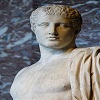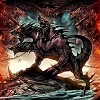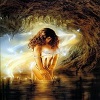Medusa
The famous Snake-Haired Gorgon
Arguably Medusa is the most famous villainess and monster of Greek mythology, for Medusa was the monster with hair of snakes and a stony gaze encountered by the hero Perseus.
THE GORGON MEDUSA
In the oldest Greek mythological tales, there were three Gorgons, of which Medusa was but one.
Hesiod would write, in the Theogony that the three Gorgons were Euryale, Sthenno and Medusa, with these three monstrous sisters being the offspring of Phorcys and Ceto. Phorcys and Ceto also being parents to other “monstrous” characters including Echidna, Ladon and the Graeae.
Some ancient texts tell of how Ceto would give birth to Medusa, and the other Gorgons, in one of the caverns located deep beneath Mount Olympus.

DESCRIPTIONS OF MEDUSA
The traditional description of Medusa and her sisters were of winged women, with large heads; large head that held large staring eyes, and the tusks of swine. Additionally, the Gorgons were also said to have had hands made of brass.
The most striking feature of Medusa and her sisters would be the hair upon their heads, for each lock was made up of a hissing snake.
Medusa was not considered the most deadly of the three Gorgons though, for this accolade was given to Sthenno, who it was said had killed more people than Medusa and Euryale combined.
The home of Medusa and her sisters was a closely guarded secret, a secret kept by the Graeae, but Hesiod suggested that the Gorgons lived upon an island close to the Island of the Hesperides at the western extremes of the known world, although later writers also claimed Medusa and hers sisters were to be found in Libya.
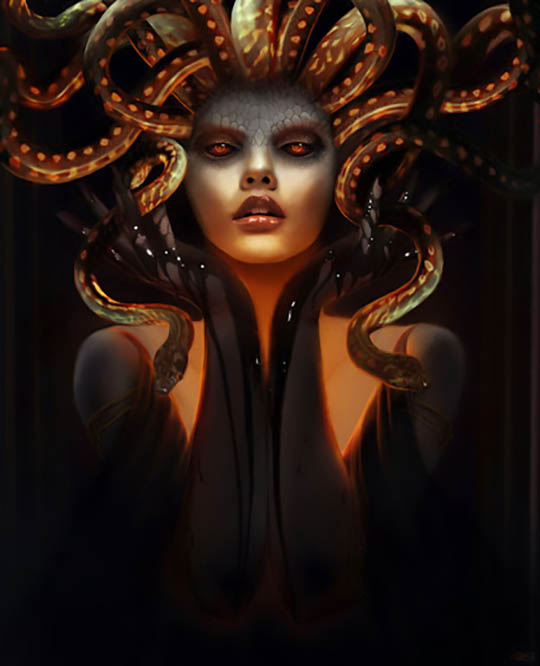
MEDUSA TRANSFORMED
Although Hesiod gives an account of Medusa’s origins and the death of Medusa at the hands of Perseus, he does not say more about her. By contrast, a more comprehensive account of Perseus and Medusa can be found in Ovid's Metamorphoses.
In the oldest traditions Medusa, like her sisters, was thought to have been monstrous, but later writers would tell of the transformation of Medusa from beautiful woman into monster, although keeping the parentage of Phorcys and Ceto the same.
As a beautiful maiden, Medusa would become an attendant in one of the temples dedicated to Athena.
Medusa once had charms; to gain her love
A rival crowd of envious lovers strove.
They, who have seen her, own, they ne'er did trace
More moving features in a sweeter face.
Yet above all, her length of hair, they own,
In golden ringlets wav'd, and graceful shone.
– Ovid, Metamorphoses
Some tell of how Medusa foolishly declared herself as beautiful as Athena, but this was not her only “indiscretion”, for the beauty of Medusa would attract the attention of the sea god Poseidon. Poseidon would give into his lustful thoughts by raping Medusa in Athena’s temple.
This act of sacrilege could not go unpunished by Athena, but of course Poseidon could himself not be punished, and so Athena instead punished Medusa by transforming her into a monster. Medusa would then leave her home to live with the other Gorgons.
"In the middle is the Gorgon Medusa, an enormous monster about whom snaky locks twist their hissing mouths; her eyes stare malevolently, and under the base of her chin the tail-ends of serpents have tied knots." - Virgil

THE QUEST FOR MEDUSA'S HEAD
Medusa is best known to today for her role in the adventures of the Greek hero Perseus.
King Polydectes of Seriphos wanted to get rid of Perseus, so that he could have his way with Perseus’ mother Danae. Polydectes would trick Perseus in accepting a quest to obtain the head of Medusa, Perseus believing that it was to be a wedding gift, so that Polydectes could marry another woman, not Danae.
As Medusa was the only Gorgon that was mortal, she was the only one that could be decapitated, although of course, Polydectes assumed that Perseus would be killed by the Gorgon.
PERSEUS AND MEDUSA
Perseus though was a son of Zeus, and also a mortal favoured by his half-sister, the goddess Athena. Athena would supply Perseus with a reflective shield, a razor-sharp curved sword manufactured by Hephaestus, Hades’ Helmet of Invisibility, and Hermes’ flying sandals.
Fully armed, Perseus would force the location of Medusa from the three Graeae, and the hero made his way to the Gorgons’ lair.
Perseus would choose a time when Euryale and Sthenno were asleep in their caves, before entering the cave of Medusa. By looking into the reflective shield, Perseus was able to approach Medusa, without being harmed by the gaze of the Gorgon, and then one cut with the razor-sharp sword was enough to cleave the head of Medusa from her body.
Perseus then picked up the head of Medusa and deposited it into the satchel that he had brought with him. Perseus then put on the Helmet of Invisibility and made a rapid escape as Sthenno and Euryale were awake and now aware of the fate of their sister.

CHILDREN FOR MEDUSA
When Perseus decapitated Medusa, it was said, that two offspring emerged from the open neck wound.
These two children of Medusa were Pegasus, the mythical winged horse, used to great effect by Bellerophon, and the second child was Chrysaor, the golden giant who would become the King of Iberia.
Perseus himself did not make use of Pegasus, despite the many depictions of him doing so, for Perseus still had the winged sandals of Hermes to allow him to fly.

THE STORY OF MEDUSA CONTINUES
The story of Medusa in Greek mythology continued briefly after her decapitation.
Aethiopia
Perseus return journey to Seriphos was a long one, and stopping off in Aethiopia Perseus discovered that Andromeda was to be sacrificed to a sea monster. Now some tell of how Perseus turned that sea monster into stone with the head of Medusa, but older myths have Perseus stabbing the monster through its shoulder until it was killed.
Certainly though, Perseus did make use of the head of Medusa in Aethiopia, for having rescued Andromeda, Perseus then married the princess. During the feasting though, Perseus would be attacked by Phineus and his followers, and after a thrown spear missed Perseus, the demi-god killed many, before Perseus removed the head of Medusa from its satchel, turning all of his enemies, including Phineus to stone.
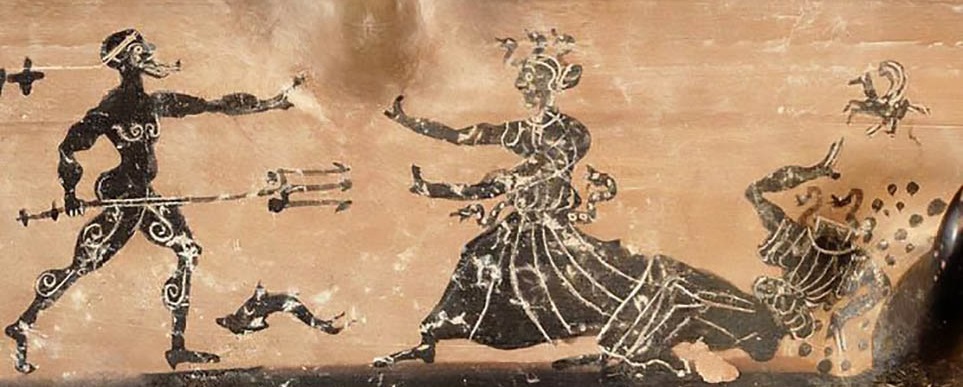
THE BLOOD OF MEDUSA
Snakes
As Perseus flew over the desert area of North Africa, so blood started to seep out of the satchel, and when Medusa’ blood fell upon the desert’s sands, so poisonous snakes were created.
Coral
During his journey back to Seriphos, Perseus would rest a while at the shoreline of the Red Sea. The blood of Medusa would once again seep out of the satchel, making its way into the sea, creating as it did the hard red coral found even today in the Red Sea.
Asclepius
The blood of Medusa would be given to Asclepius at a later date by the goddess Athena. The blood was of course normally deadly, but Asclepius managed to make potions out of that could cure many ailments.
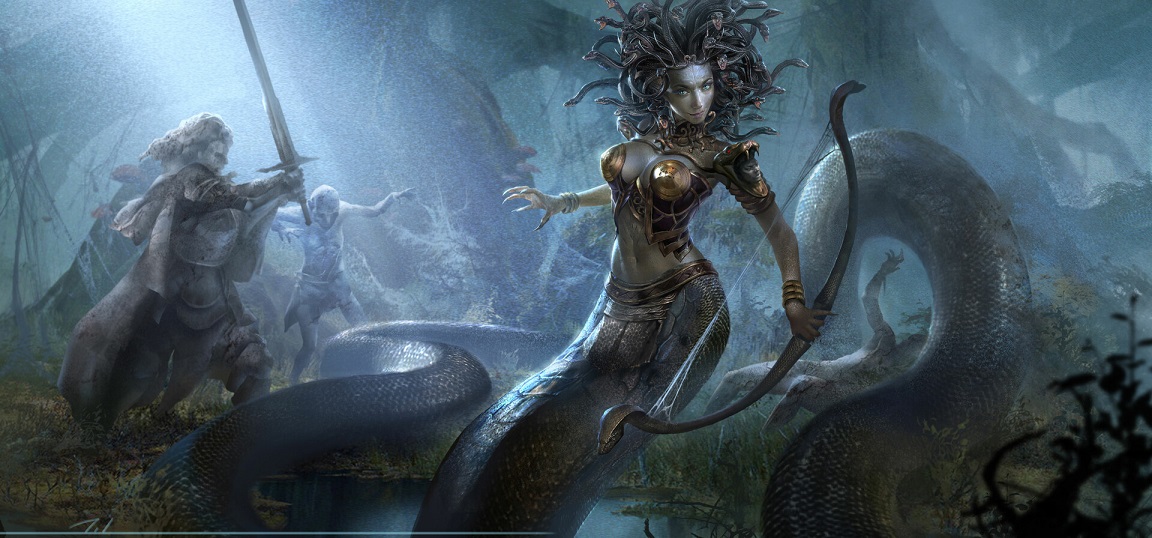
THE HEAD OF MEDUSA
Atlas
A myth would emerge that Perseus encountered the Titan Atlas during his return journey; Atlas fulfilling his role of holding the heavens aloft. Atlas though talked down to Perseus and in retribution Perseus used the head of Medusa to turn Atlas to stone, possibly creating the Atlas Mountains as he did so. This myth though doesn’t sit well with the fact that Heracles, a descendent of Perseus, encountered the non-petrified Atlas generations later.
The Wedding of Danae and Polydectes
Perseus certainly made use of the head of Medusa upon Seriphos, for when he returned home, Perseus found that King Polydectes was forcing Danae to marry him. As the wedding ceremony was taking place, Perseus removed the head of Medusa from its satchel, and turned Polydectes, and the assembled wedding guests to stone.
Athena
With his quest completed, Perseus presented the head of Medusa to Athena, the goddess who had done much to aide Perseus during his adventures. Athena would subsequently put the head of Medusa onto her own shield, her Aegis, making her shield an attacking weapon, as well as a defensive one.
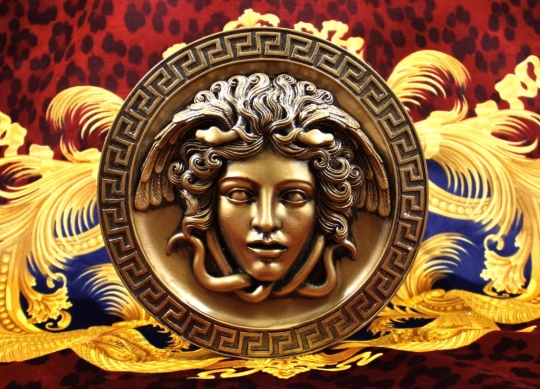
Heracles
Athena was said to have given a lock of Medusa's hair to Heracles, who subsequently gave it to Sterope, the daughter of King Cepheus, to keep the city of Tegea safe, whilst her father and brothers went to war against Hippocoon and his sons, fighting alongside Heracles.
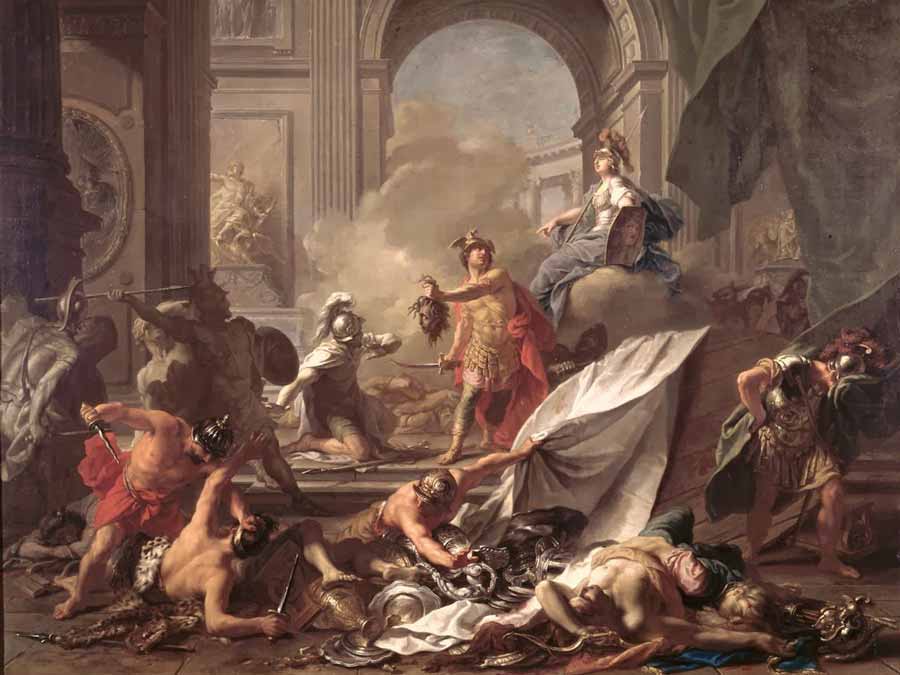
Interesting Facts About Medusa
Born to the sea god Phorcys and Ceto (Phorcys’ wife and sister), Medusa (queen or ruler) was one of the three Gorgon sisters. The other two sisters were Stheno (strength) and Euryale (wide-leaping).
Greek poet Hesiod wrote that Medusa lived close to the Hesperides in the Western Ocean near Sarpedon. Herodotus the historian said her home was Libya.
Medusa’s sisters were immortal but she was mortal.
Medusa wandered Africa for some time. Legend says while she was there baby snakes dropped from her head and this is why there are plenty of snakes in Africa.
Many artists made Medusa into a work of art.
Leonardo da Vinci did a painting of her using oil on canvas.
She was made into marble and bronze sculptures.
From c. 200 B.C.: In Pompeii’s House of the Faun, Medusa was on the breastplate of ALEXANDER THE GREAT in the Alexander Mosaic.
The coat of arms of the Dohalice village from the Czech Republic depicts Medusa’s head.
The flag and emblem of Sicily also features her head.
Two species of snakes contain her name: the venomous pitviper Bothriopsis medusa and the nonvenomous snake called Atractus medusa.
Medusa represents philosophy, beauty and art.
The Medusa head is part of fashion designer Gianni Versace’s symbol.
She has been featured in movies, books, cartoons and even video games.
There are several versions of the Medusa myth.
In almost every version of the Medusa myth, King Polydectes of SERIPHUS SENT PERSEUS TO RETURN WITH HER HEAD so that Polydectes could marry his mother. The GODS aided Perseus in his quest and he was sent golden winged sandals from HERMES, Hades’ helm of invisibility, a sword from HEPHAESTUS and a mirrored shield from Athena.
PERSEUS the hero slayed Medusa, the only mortal of the Gorgon sisters, by viewing her in the reflection of the mirrored shield of Athena. Perseus then beheaded her. At this moment Chrysaor, the giant with a golden sword, and the winged horse PEGASUS sprang forth from her body. These are her two sons.
In feminism Medusa is known as a symbol of rage even though she was originally exceedingly beautiful.
A Roman cameo from the second or third century contains her head.
A tepidarium from the Roman era has a mosaic floor with her head at the center.
Her profile is engraved on coins of the reign of Seleceus I Nicator of Syria from 312-280 B.C.
The ARTEMIS temple in Corfu depicts Medusa in archaic form. She is a symbol of fertility dressed in a belt of intertwined snakes.
A story says that HERCULES acquired a lock of Medusa’s hair from Athena and gave it to the daughter of Cepheus, Sterope, to protect the town of Tegea from being attacked. Her hair held the same powers as her head so that when it was exposed it caused a storm which chased away the foes.

Sources
Hesiod, Theogony 281
Pseudo-Apollodorus, Bibliotheke 2. 42,
Servius, In Aeneida vi.289
Lucan, Bellum civile ix.624–684
Ovid, Metamorphoses iv.774–785, 790–801
Garber, Marjorie, Vickers, Nancy, The Medusa Reader, Routledge; 1 edition (February 26, 2003).
Harrison, Jane Ellen (1903) 3rd ed. 1922. Prolegomena to the Study of Greek Religion,: "The Ker as Gorgon"
London, Jack (1914). The Mutiny of the Elsinore.
Smith, William; Dictionary of Greek and Roman Biography and Mythology, London (1873). "Perseus"
Wilk, Stephen R. (2007). Medusa: Solving the Mystery of the Gorgon. Oxford University Press.
Walker, Barbara G. (1996). The Women's Encyclopedia of Myths & Secrets. New Jersey: Castle Books.
Harris, Stephen L. and Gloria Platzner. Classical Mythology: Images and Insights. 2nd ed. (New York: Mayfield Publishing), 1998. 234.
"Greek Legends and Myths"
"Greek Gods & Goddesses"
"Ancient Origins"







